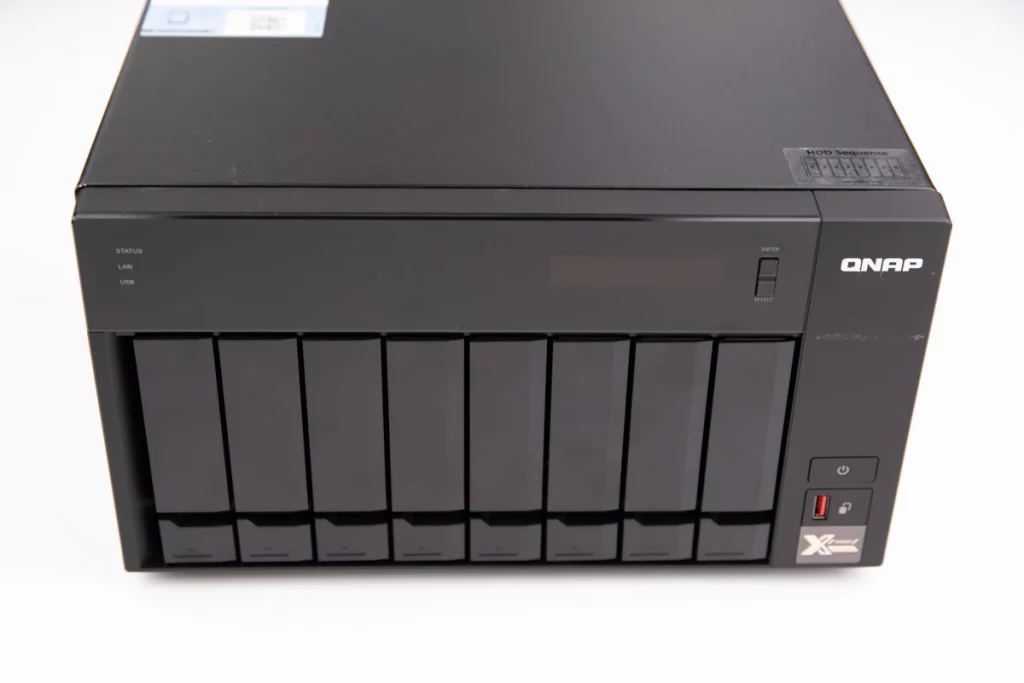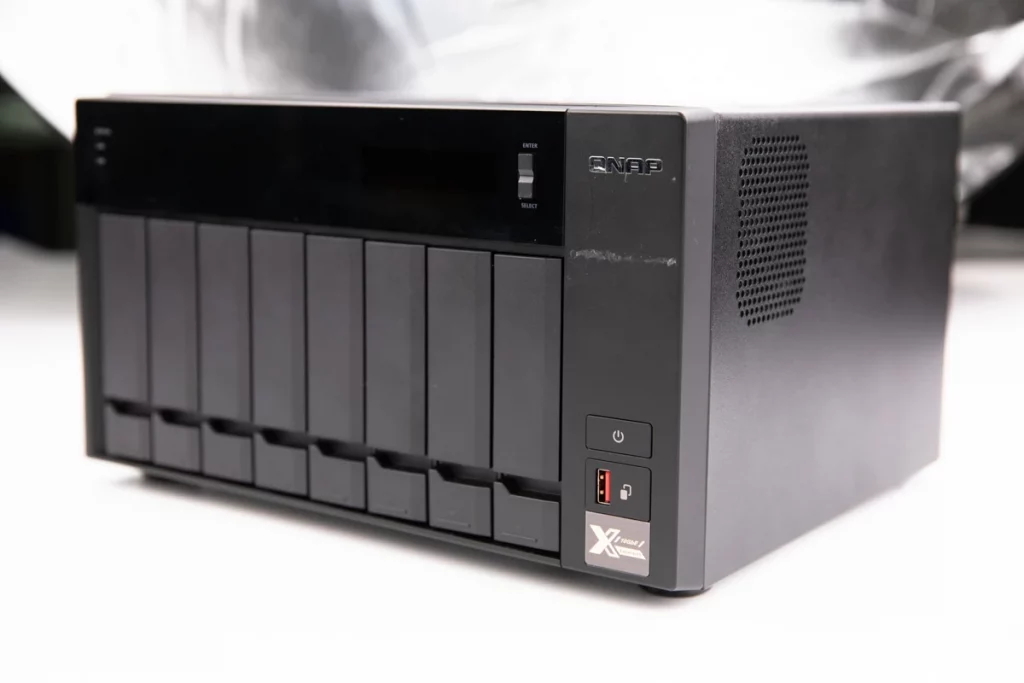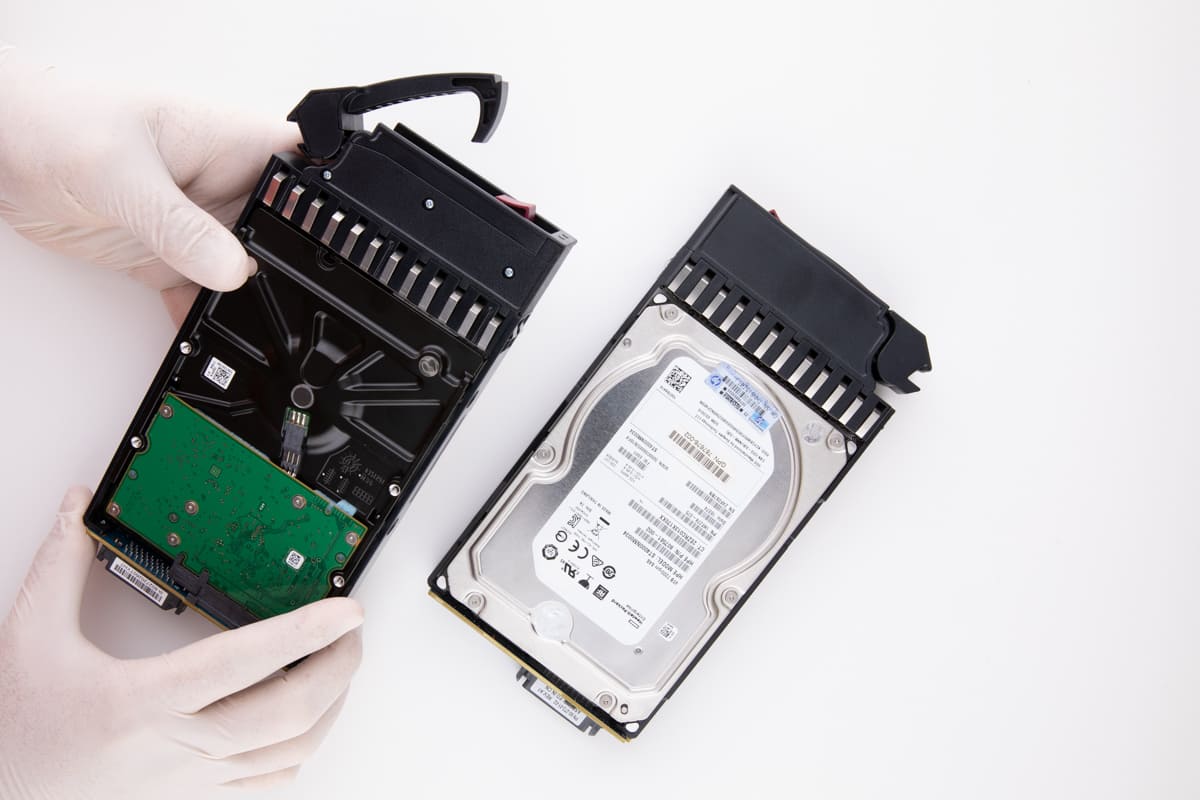Migrating from RAID 1 to RAID 5 on QNAP is a strategic move for businesses aiming to optimize storage efficiency without compromising data security. This process enhances your data storage capacity and ensures data recoverability, making it a critical step toward improving your organization’s data management strategy. This blog will guide you through the nitty-gritty of RAID 1 and RAID 5 and demonstrate the importance of this migration in achieving superior storage efficiency.
RAID Migration - Prepare for Process
Before proceeding with RAID migration, backing up your data is paramount. The process of RAID migration involves reconfiguring your storage setup and is inherently fraught with potential risks, including the possibility of data loss. Therefore, a comprehensive data backup is advisable to protect valuable information from unforeseen circumstances. Utilize QNAP’s NetBak Replicator or any other reliable third-party backup solution and store your backup data in a safe and separate location.
The next crucial step involves confirming your QNAP device’s hardware compatibility with RAID 5 configuration.
Not all QNAP devices support RAID 5, so you’ll need to refer to the specifications provided by the manufacturer or consult with their customer support to ensure your device is compatible.

Additionally, verify the health of your disks by conducting comprehensive diagnostic tests. This step helps ensure all disks are in optimal condition and ready for migration, minimizing the potential for errors during migration.
Process of Migrate from RAID 1 To RAID 5
The migration process from RAID 1 to RAID 5 begins by adding a disk to your current RAID 1 configuration. Remember, RAID 5 requires a minimum of three disks, unlike RAID 1, which only needs two. Once the additional disk is installed, you can initiate the migration process via QNAP’s Disk Management interface. The system redistributes and restructures data across the three disks during this process, transitioning from data mirroring to striping with parity.
It’s important to note that the migration process will cause a significant system load. Consequently, you can expect decreased system performance and potentially longer response times during this period. Therefore, scheduling the migration process during off-peak business hours is recommended to minimize disruptions. Lastly, remember that the migration process can take several hours, depending on the data amount and the disks’ performance.
Step-by-Step Guide for Migrate RAID 1 to 5 on QNAP
Before diving into the step-by-step guide, it’s essential to reiterate the importance of patience and attention to detail during this process. The migration process from RAID 1 to RAID 5 involves a significant array of tasks, each requiring your utmost attention to ensure the process goes smoothly. Remember, the key to successful RAID migration lies in careful preparation, a thorough understanding of the process, and a patient, methodical approach.
Backup Your Data
Before initiating the migration process, ensure you have a complete backup of your data to prevent any potential loss. Because even in the best-case scenario, the risk of data loss should never be underestimated.
Access QNAP Management Interface
Log in to your QNAP NAS device using a web browser and enter the management interface using the device’s IP address.
Verify Disk Health
Use the QNAP management interface to check the health of all disks in your RAID 1 array. Replace any failing disks before proceeding.
Identify RAID Configuration Settings
- Navigate to the “Storage & Snapshot” or a similar section, depending on your QNAP model.
- Locate the RAID 1 array you want to migrate in the Storage Pool and double-click on the one you want to expand.
Add New Hard Drive
- Prepare a new hard drive ready to go inside your QNAP.
- You can introduce a drive without powering down the QNAP if you have a Hot Swap option. If you have not, you need to power down the QNAP and install the drive inside the unit layer of your device.
- Ensure the new drive you want to add has the same capacity as others. If you go down the capacity, RAID will not allow you to add a drive to the array because of bottleneck redundancy issues. If you go up with the capacity, the new drive will also have the smallest drive capacity as in your RAID array.
Initiate Migration Process
- Select the RAID 1 array you want to migrate and look for an option like “Migrate” or “Change RAID Type.”
- Choose RAID 5 as the new configuration and follow the on-screen instructions.
Monitor Progress
- The RAID migration process may take some time, depending on the size of your data and the speed of your disks.
- Monitor the progress within the QNAP management interface. It may provide estimates for completion.
Address Any Issues
- The QNAP interface may provide alerts or warnings if any issues arise during the migration. Address these promptly to ensure a smooth migration.
Verify RAID 5 Configuration
- Once the migration is complete, verify that the RAID 5 configuration is active and all disks function correctly.
- Confirm that the data has been redistributed across the new array.
RAID 1 to RAID 5 - Failed Migration
In the unfortunate event of a failed migration from RAID 1 to RAID 5, it’s essential not to panic or take hasty actions that could potentially exacerbate the situation. The best course of action is to seek professional assistance. Raid Recovery Services is an industry leader in RAID Data Recovery, boasting a highly skilled team of engineers and a stellar track record in data recovery.

Raid Recovery Services is well-known for its expertise in recovering data from NAS systems, including QNAP devices. With a team of highly skilled engineers, they leverage advanced technology and vast experience to deliver reliable recovery solutions for various NAS configurations.
In the case of a failed RAID migration, Raid Recovery Services can provide expert assistance in recovering any data lost during the process.
Whether a simple data loss scenario or a complex RAID migration failure, Raid Recovery Services’ expertise ensures that your valuable data can be retrieved securely and efficiently, making us a trusted choice for QNAP NAS data recovery. Contact us today and learn how we can help recover your data.
Frequently Asked Questions
What is RAID 5?
RAID 5 is a disk array configuration that uses disk striping with parity. It needs a minimum of three disks and provides redundancy in case of a single disk failure.
What are the advantages of migrating from RAID 1 to RAID 5?
Migrating from RAID 1 to RAID 5 allows you to utilize more disk space while providing redundancy. Unlike RAID 1, which mirrors data on two disks, RAID 5 strips data across all disks, including parity data for fault tolerance.
How long does the RAID 1 to RAID 5 migration process take?
The RAID migration process’s duration depends on the data amount and the disk’s speed. It can take several hours to complete.
Can I use my QNAP device during the RAID migration process?
Yes, but the system will experience a significant load during the migration, which may result in decreased performance and longer response times. It is advisable to schedule the migration during off-peak business hours to minimize disruptions.
What should I do in case of a failed RAID migration?
In the event of a failed RAID migration, seeking professional assistance is recommended. Raid Recovery Services is a trusted provider of data recovery solutions, including RAID migration failure.
